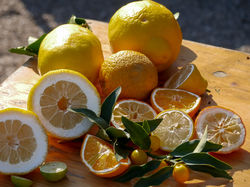 In addition to the hardy lemons, we have also decided to include non-hardy but nevertheless cold-tolerant lemon varieties or species in the range. These lemons are cultivated in the home garden as classic container plants and require a cool but frost-free and bright location for overwintering, as they are also evergreen plants. As already described at the beginning, these varieties/species also have a certain tolerance to slightly negative temperatures. For the hobby gardener, this means that the plants can be placed outdoors before the frosty weather sets in. But it also means that the plants do not have to be brought back in a hurry at the first signs of frost.
In addition to the hardy lemons, we have also decided to include non-hardy but nevertheless cold-tolerant lemon varieties or species in the range. These lemons are cultivated in the home garden as classic container plants and require a cool but frost-free and bright location for overwintering, as they are also evergreen plants. As already described at the beginning, these varieties/species also have a certain tolerance to slightly negative temperatures. For the hobby gardener, this means that the plants can be placed outdoors before the frosty weather sets in. But it also means that the plants do not have to be brought back in a hurry at the first signs of frost.
Advantages of the Citrobella® citrus young plant assortment
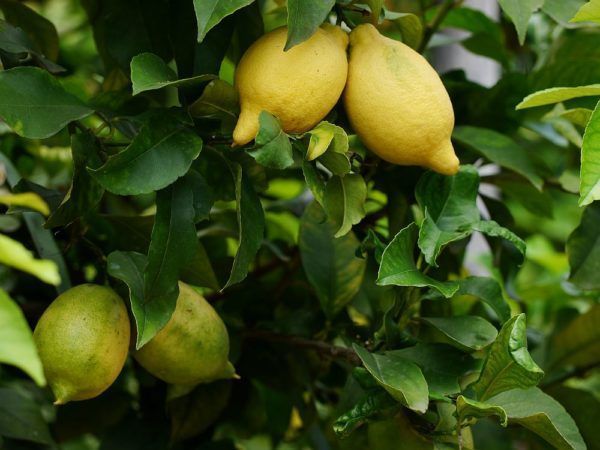
Picture: Who doesn't dream of growing their own lemons? With the Citrobella® Citrus young plant assortment, this will be possible in the future.
Our Citrobella® Citrus young plants range has the following advantages:
- Easy to care for
- Diverse citrus groups
- Cold tolerant but not frost resistant (lemons more than mandarin oranges or limes)
The Citrobella® young plant assortment
Citrus volkameriana – Volkamer lemon

Picture: The soft-scented flowers of the Volkamer lemon (Citrus volameriana).
The Volkamer lemon – Citrus volkameriana – is probably the species among the cold-tolerant citrus young plants that is still most similar to our ordinary supermarket lemon. Temperatures as low as -3°C for a short period of time are no problem; even when grown in a pot, the plant tolerates this quite well. At even lower temperatures, the plant does not die immediately, but it is quite possible that the leaves are shed as a protective mechanism.
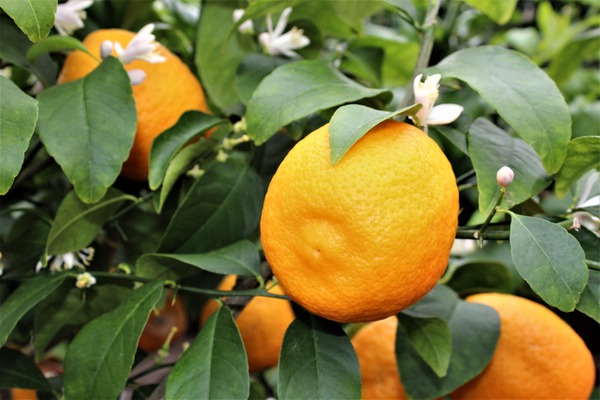
Picture: Like all lemons, the Volkamer lemon has flowers and ripe fruit at the same time.
In the kitchen, the Volkamer lemon is used like an ordinary lemon. The juice is easy to squeeze and the peel is also edible. The easily squeezable juice of the Volkamer lemon has a greenish yellow colour and an intense lemony scent, almost a little too sharp. The taste is in no way inferior to the scent, which is sharp lemony with distinct green and also slightly bitter notes. But probably only very few people drink the pure lemon juice.
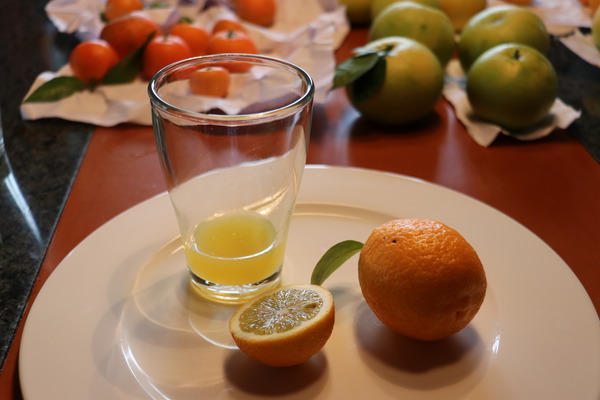
Picture: Tasting at the limit - the Volkamer lemon. In the kitchen, the Volkamer lemon (Citrus volkameriana) is used like any conventional lemon (juice & peel).
Short description:
- Growth: moderately vigorous growth, quite robust plants as far as soil and susceptibility to disease are concerned
- Flowers: large, white flowers with a delicate fragrance
- Fruits: medium-sized fruits, roundish to slightly teardrop-shaped; the ripe fruits are warm yellow to light orange in colour
- Overwintering: frost-free but cool, ideally between 5°C and 8°C in a light location
- Use: juice and peel, just like a normal kitchen lemon
Citrus hystrix - Kaffir lime

Picture: The leaves of the kaffir lime are the actual spice. When cooking/preparing, the leaves give off a wonderful lemony-lime aroma to the dishes. The winged leaf stalks, which act like an additional leaf, are striking.
The kaffir lime – Citrus hystrix – sometimes also called Thai lime, originally comes from the tropical areas of Southeast Asia. The plants form rather small shrubs and the shoots are armed with thorns. The leaves are very striking, as they appear to have two leaves in a row along the longitudinal axis. This is not the case, however, because the 'leaf' underneath is the strongly stiffened petiole. The leaves are covered with a shiny wax layer. The relatively small, white flowers develop small, roundish to pear-shaped fruits with a rather uneven, rough skin. The fruits turn from a rich dark green to a light yellowish green when ripe. However, the kaffir lime fruits are usually traded and used unripe.
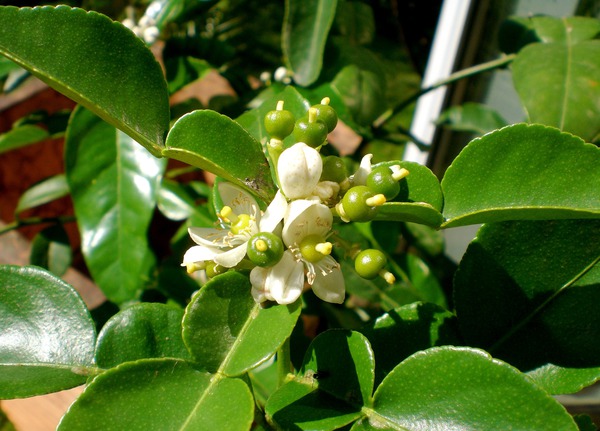
Picture: If the kaffir lime likes its location, flowers are not unlikely.
Kaffir lime is the most exotic of the young citrus plants. While almost all other young citrus plants use mainly the fruits, the kaffir lime uses mainly the leaves. The fresh leaves exude an intense citrus scent that can be used to flavour all kinds of hot and cold dishes. The whole leaves are often used in curry dishes, but they are not eaten here. The leaves can also be eaten raw, cut into fine strips and added to salads or simply pureed in a dressing.

Picture: The fruits of the kaffir lime turn a greenish-yellow colour when ripe. The fruits are also edible, but are only used as a spice in the kitchen.
Short description:
- Growth: moderately vigorous with strong branching, forms rather compact plants; most striking are the double leaves with winged petioles
- Flowers: small, white flowers at the ends of last year's shoots
- Fruits: small fruits, at most the size of a mandarin orange; very wrinkled skin that turns green-yellow when ripe
- Overwintering: a plant with tropical origins, little tolerance to frost; frost-free overwintering in a light location, likes it a little warmer than other citrus species, prefers temperatures between 10 and 15°C rather than 5 - 8°C
- Uses: mainly the leaves are used in Asian cooking, sometimes also the green fruits, but always as a spice; the leaves can also be used as a substitute for mothballs; due to the intense essential oils, the kaffir lime is also used in cosmetics
More blog posts on citrus young plants
Read our other blog posts on the subject of citrus young plants:
- Switrus® – The hardy citrus young plants!
- Production of citrus plants from Lubera Edibles citrus young plants
